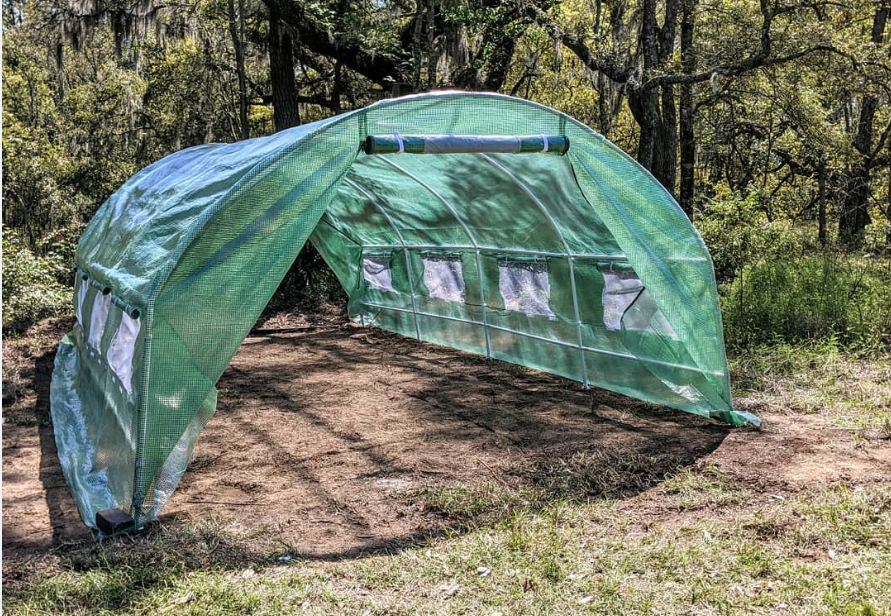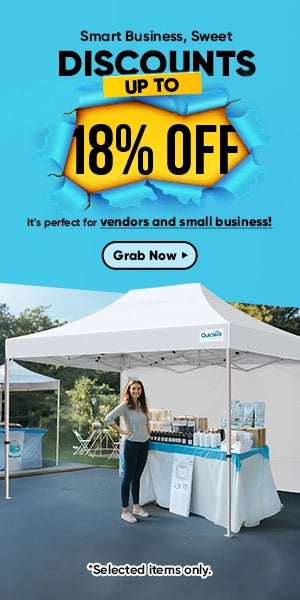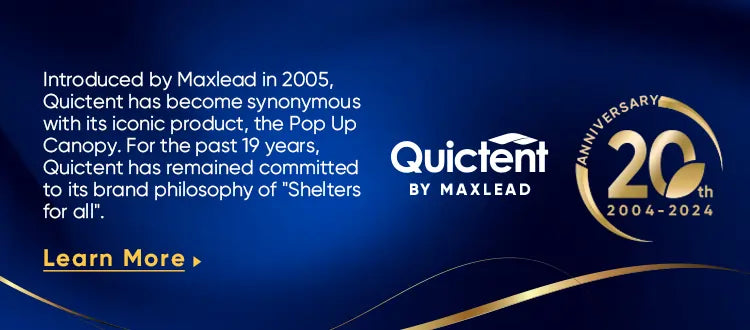Contents
What’s the size you should pick?Which season you’ll use the greenhouse?
Covering
Glass
Plastics
Framing
Wood
Aluminum
Steel
PVC
With summer nearly over, it’s time to think about houseplants. We have introduced the benefits of greenhouses, step-by-step assembly instruction, and ways to strengthen a greenhouse to protect it from blowing away, here comes the ultimate buying guide for greenhouses. Whether you decide to buy from Quictent or the other seller, we hope what we provide would be informative to help you make a decision.
Given the building permit of local states, we only break down the factors you should pay attention to when picking up a temporary greenhouse. If you’re intending to build a permanent structure, you’d better find a contractor locally, it would be the most efficient way to save time and energy.
Let’s get started with two questions: What’s the size you pick? Which season you’ll use the greenhouse? They are basic questions to help clarify your needs.
What’s the size you should pick?
Well, you decide to buy a temporary greenhouse. Here naturally comes the very first thing you should consider: the greenhouse size. A small one, a large one, or something in between?
Greenhouse structures range in size from small sheds to industrial-sized buildings. If you’re a beginner to grow for your amusement and use, you’d better start with a small scale, despite it means you have to grow fewer plants in a single unit. Keep in mind: every gardening fancier gets skilled through practice. You can try a bigger one soon. Just be patient with the first step, or you’ll bear the unexpected loss.
Another factor to determine the greenhouse size is the plants you’re going to grow. For house ornamentals such as geraniums, impatiens, petunias, chrysanthemums, pansies, etc., a small or medium-sized one would be enough. To some extent, small ones would serve better than a large one in this situation as different plants have to share the same regulated climatic conditions in the same large greenhouse. Nevertheless, some plants prefer more lights (humidity) while others need less. By investing several smaller ones, you can control humidity, temperature, and sunlight according to the specific needs of the plants inside. Of course, if you want to grow vegetables in the backyard, given your desire to get organic nutrition as much as you expect, a large one would be better.
Your intended space to install the structure also determines the size you should pick. If you’re going to plan indoors, or there is just a corner left, not to specify, a smaller one with shelves would be a better choice. If you want to put the greenhouse on your backyard, or you find a perfect sheltered open place, you should consider the site size.
Which season you’ll use the greenhouse?
As a structure designed to store heat from the sun and create a warmer environment inside of it, we seldom recommend using a greenhouse in the summer (in most areas). That is, greenhouses are usually recommended in spring, fall, and winter. If you just want to extend several growing weeks in early spring or late fall, most greenhouses can meet your demands. As the winter winds down, temperatures getting cooler, an insulated greenhouse is worth investing because of the lower heating cost. Another situation worth mentioning is that you're interested in overwintering plants. In this situation, you can try a sealed (or /and insulated) greenhouse because it works better to retain heat than a general one. Of course, the sealed (or /and insulated) are also recommended for year-round vegetables and flowers.
We know the budget should also be an important factor to address. We do not unfold it here as it’s too subjective. After all, you know it the most, right?
After knowing your needs, we can move into materials of the covering and framing, and the ventilation.
Covering
Most important is the greenhouse cover as it determines the amount and type of light reach your plants, ease of maintenance, longevity, and how the structure looks like. Glass and plastics are the two materials for greenhouse coverings. They own their advantages and disadvantages.
Glass
Glass is a traditionally preferred covering material for its permanence and beauty. However, experienced gardening fanciers will not make it the first choice for its built-in shortcomings as follows:
- It’s one of the least efficient materials for retaining heat. It transmits heat and cold quickly and has very little insulating value even after being double or tripled strengthened. What’s more, it doesn't diffuse light, so there's a risk of burning plants in extremely hot days.
- It’s heavier than plastics. That is, it would easily add force to the frame and requires more care to avoid safety concerns.
- It’s expensive. Because many smaller, overlapping glass segments are required to build a glass covering greenhouse, in case of any safety concerns, you have to consider pay for installation, it’s an extra amount of money.
- It’s fragile. Glass is easily broken when extra force is added.
Plastics
Fiberglass, polycarbonate, and polyethylene film are three mainly applied plastics for greenhouse coverings. Compared to the glass, they are lightweight, flexible, shatterproof, and can resist hailstone damage. Fiberglass is the first practical replacement for glass. Fiberglass usually comes in translucent rolls or corrugated sheets. This material can diffuse light, creating a virtually shadowless greenhouse that you can't see through from outside. It is UV protected with a regular lifespan up to 6 years (local weather condition, your maintenance, etc. would be decisive). As for the polycarbonate, it's one of the newest covering options, usually comes in single, double, and triple-walled sheets. Being UV treated, it’s stronger and more resistant than other materials with an average lifespan of 15 years. The polyethylene film, also called PE film, is the most commercially applied material as most nurserymen and commercial growers make it the first choice for its easy maintenance, ease of replacement, high light transmission, and good heat retention. The average lifespan of PE coverings is about 3-5 years. Given its drawbacks of being easily ripped (torn), it usually serves less than expected years (sad story)! Quictent provides a warranty for our double-layered PE cover, you can rest assured to buy.
To sum up, put the lifespan, durability, and utility matter in order, you should take the following covering materials in a row: polycarbonate, fiberglass, polyethylene film, and glass.
Framing
Most greenhouse frames are made of wood, aluminum, steel, and polyvinyl chloride (PVC). Let's dig into each material.
Wood
Needleless to say, wood framing is attractive, easy to obtain. That’s the reason why it is commonly used for homemade greenhouse. Redwood or cedar is mostly used material for the wooden frame, either for gardening lovers or sellers in the marketplace. One of the disadvantages is its heavier weight. And you should always bear in mind that bad weather (windy, rainy, strong sunlight, etc.) would reduce its lifetime. Great care should be offered.
Aluminum
Aluminum is lightweight but not flimsy. It's the longest-lasting of all of the framing materials. Aluminum frames never rust, rot or break down from UV rays. However, it's the hardness is not as strong as wood and steel.
Steel
With built-in strength at low cost, steel frames are widely used for commercial. It's also long-lasting and requires less framework. Manufacturers will treat steel to protect the greenhouse frame from humid and corrosive (fertilizer salts). Thus, when the protective finish wears off, the steel frame would easily rust, and finally damaged. Another remarkable point, steel greenhouse frames generally require an additional hardware kit. Quictent greenhouses apply powder-coated heavy-duty steel frames, and bases, stakes are included for free.
PVC
Polyvinyl chloride (PVC) belongs to plastic. It's lightweight, portable, and easy-to-assemble. It's the most applicable framing material for a small greenhouse for its low cost. The main drawback is that UV rays will eventually cause deterioration, even it is treated to be UV protected.
In a word, according to the strength, your pick for framing materials should be steel, wood, aluminum, and PVC.
Ventilation
When it comes to ventilation, we mean both passively and actively. The widely applicable active way for ventilation is to use fans. As for the passive method, it refers to greenhouse vents – both on the roof and side panels. Generally speaking, roof ventilation is more effective in air exchange than side panel ventilation. Quictent greenhouses apply for side panel ventilation and removable zipper doors, which maximize air exchange as well.
Knowing your needs and having knowledge about greenhouses is critical when buying a greenhouse. If you have any other concerns, do not hesitate to share with us, we’re glad to go further.
At last, happy fall to all. We’ve gone through hard times from spring to summer, sincerely hope we have an easy seasonal transition this time.
Similar articles you will be interested in
Back To Green Life? Easily Become A City Fashionistas







